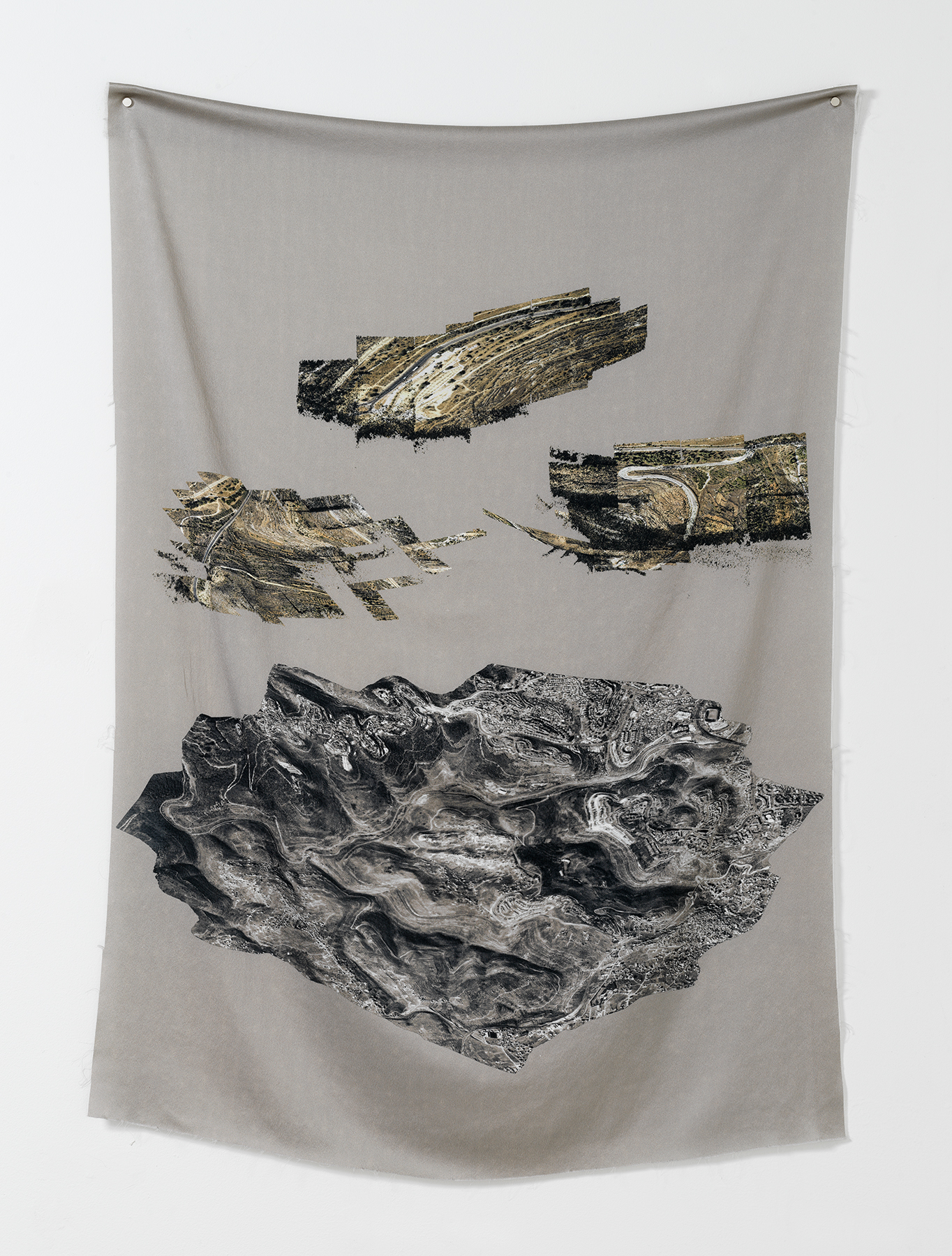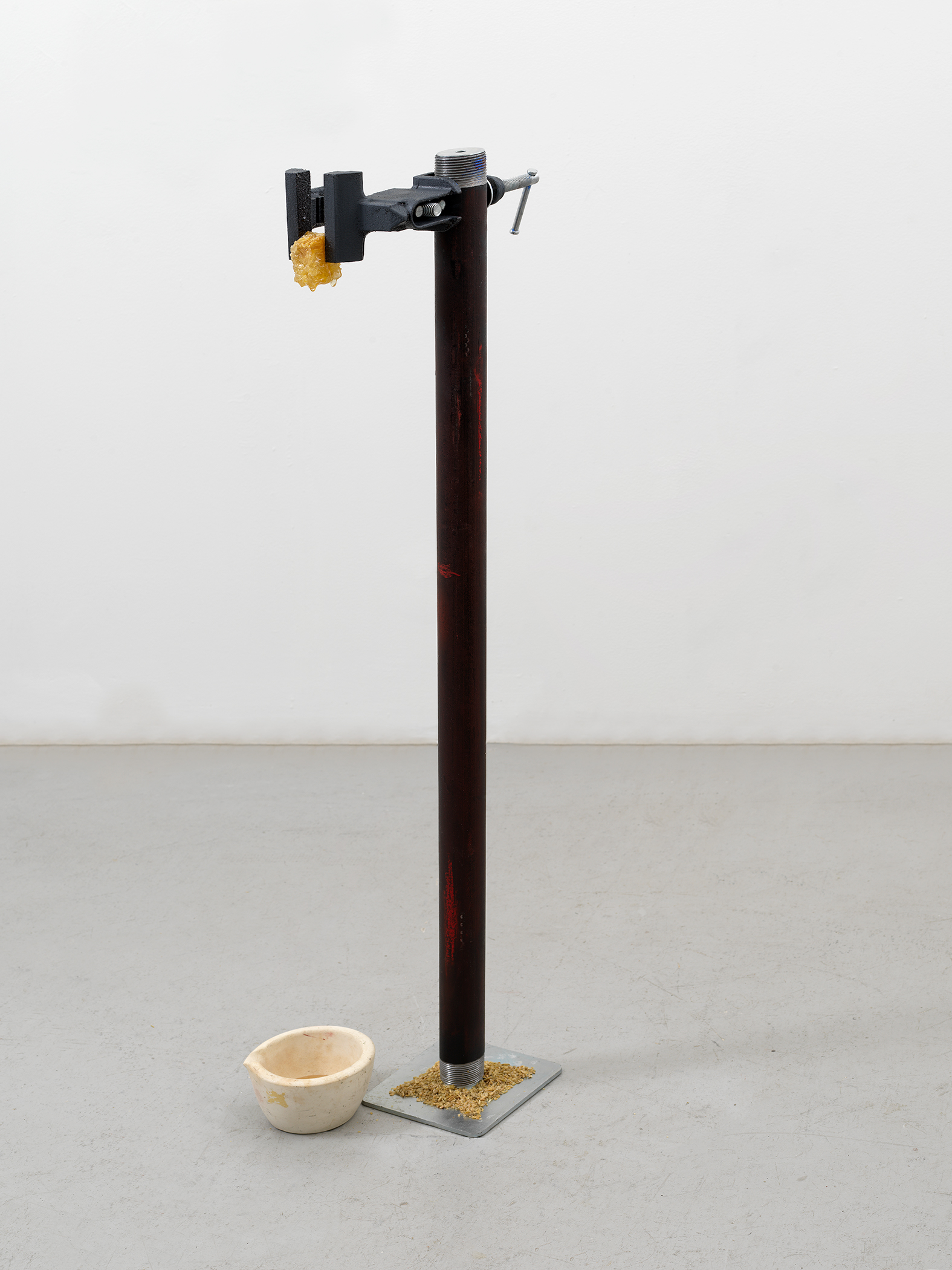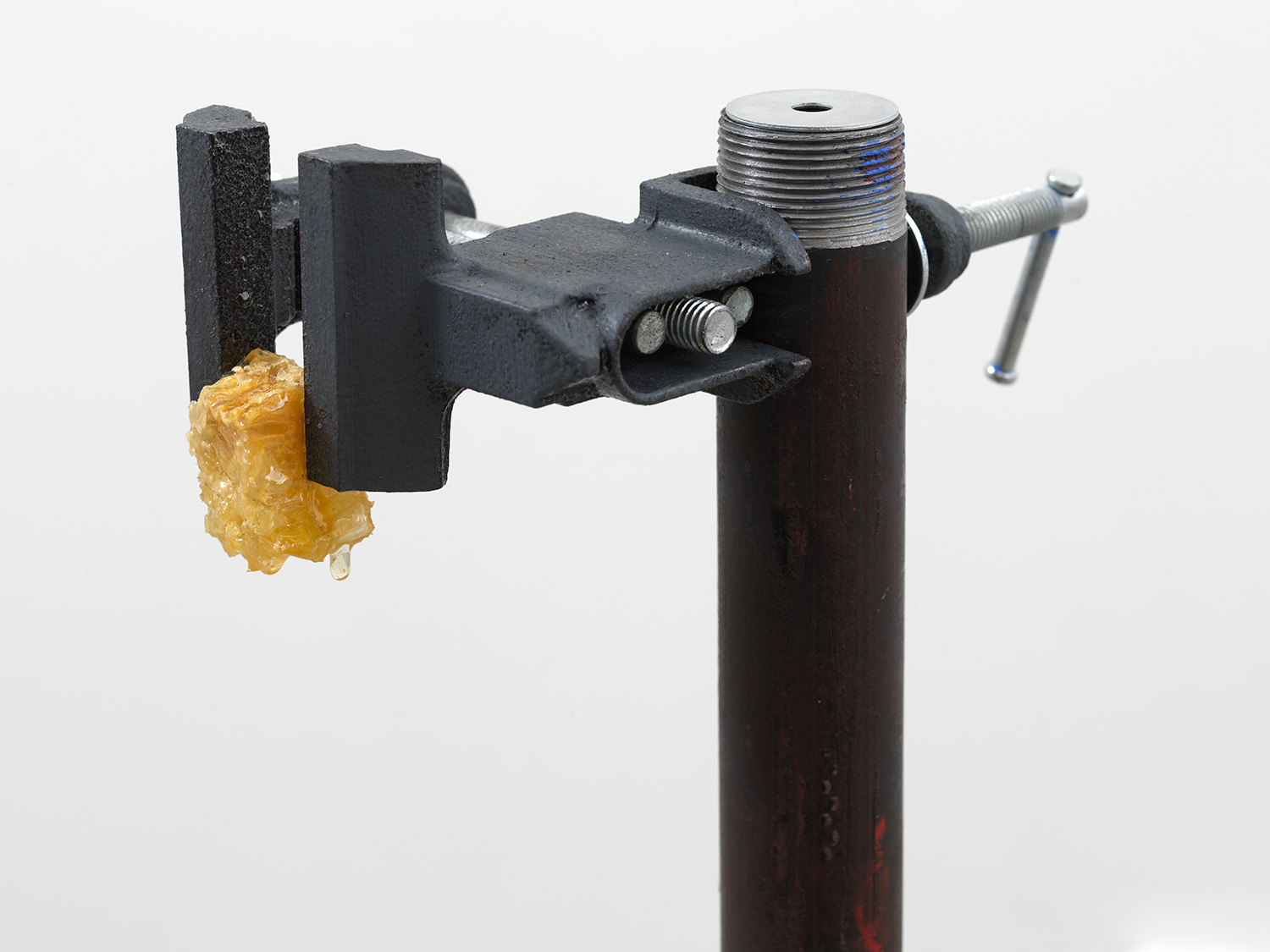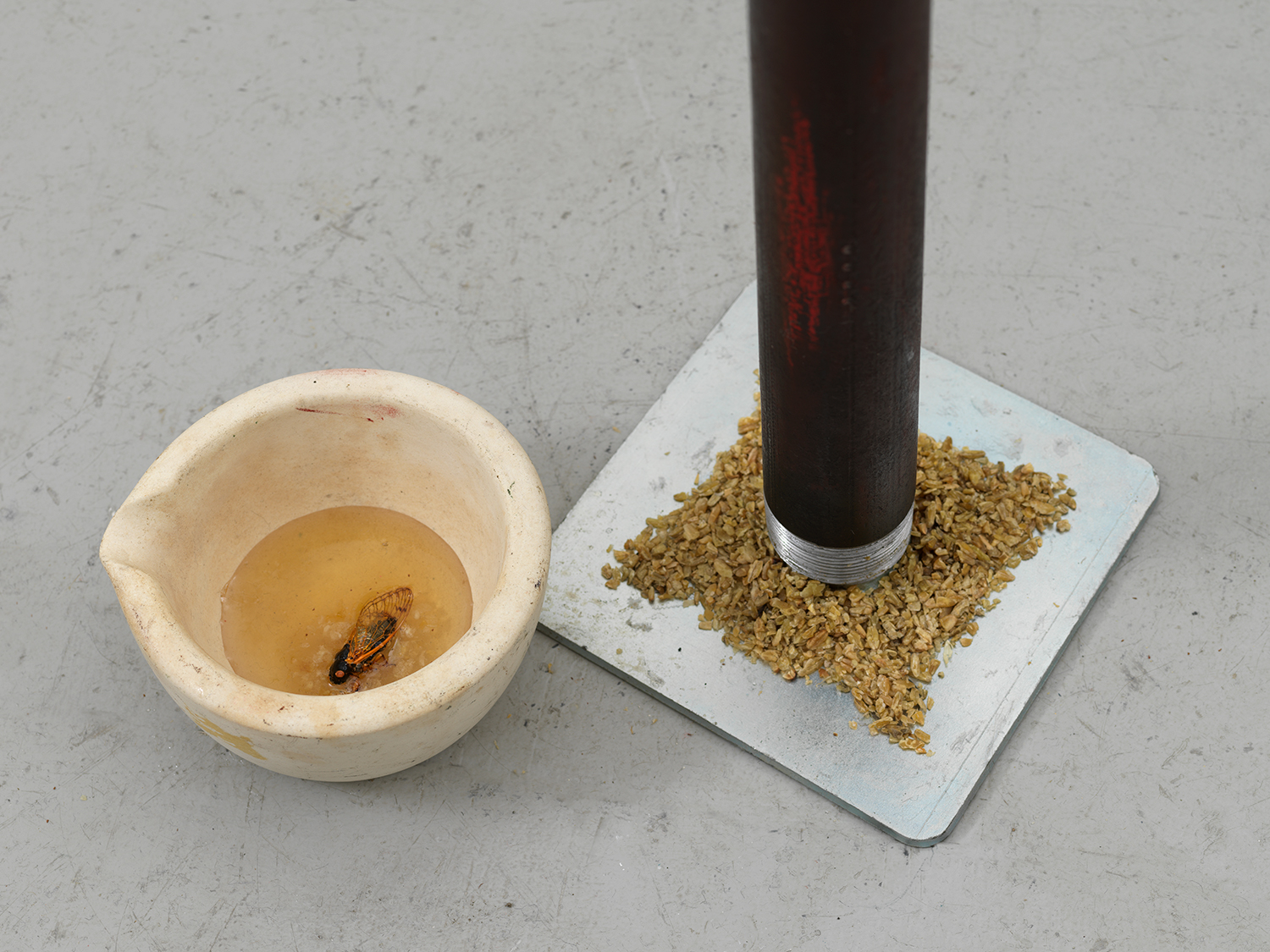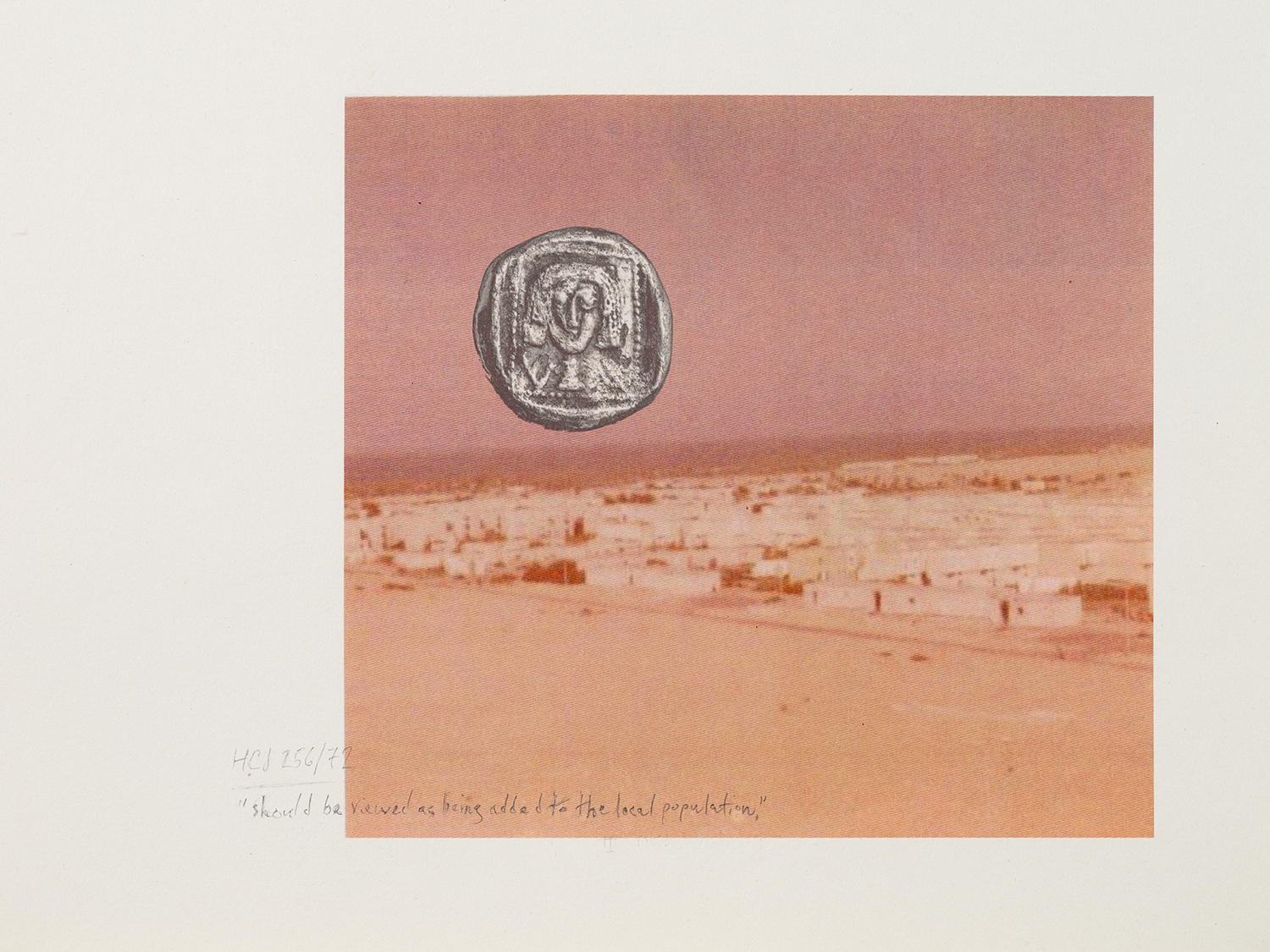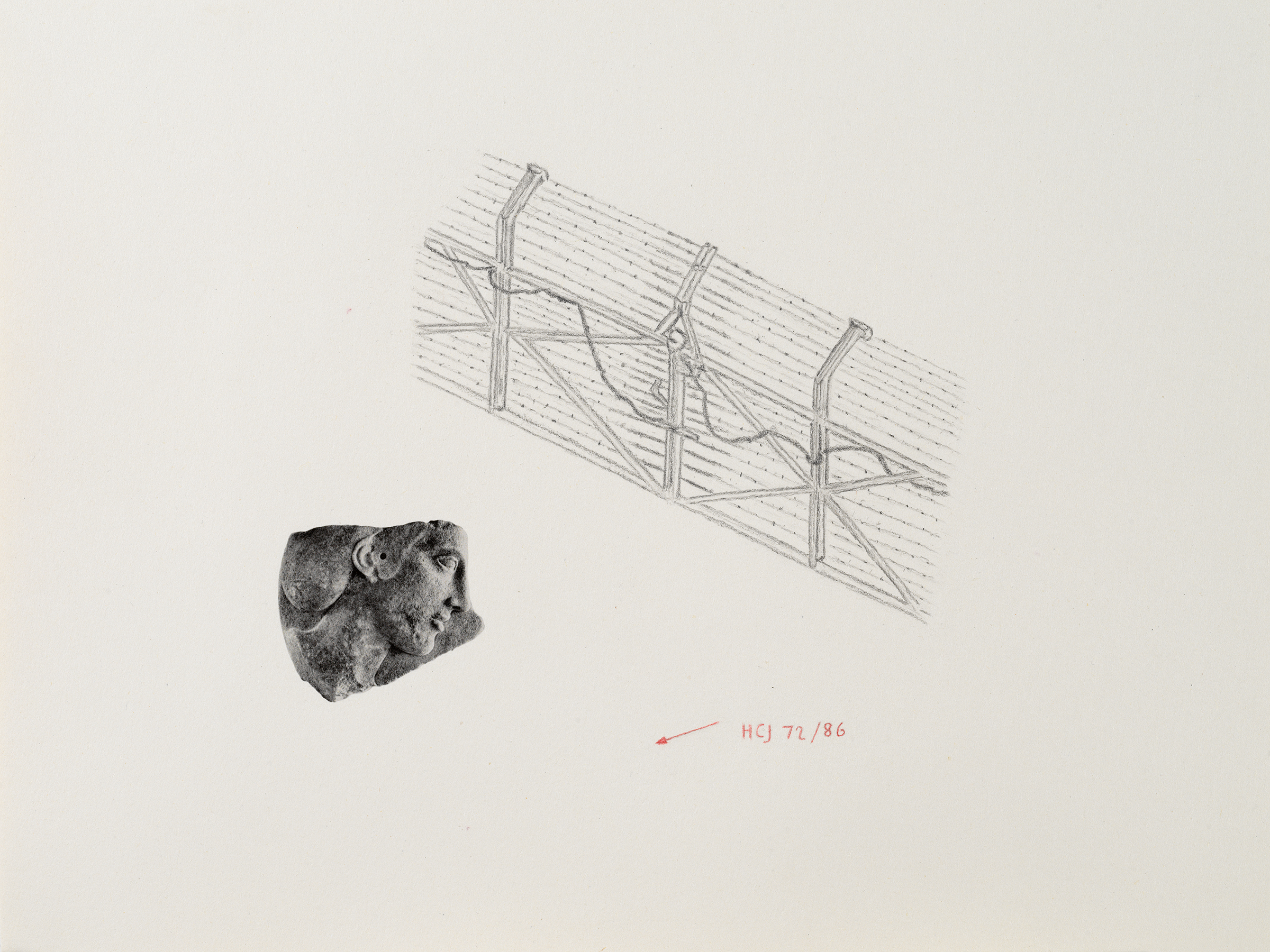Park Weapon in Al Walaja, 2018, Reactive dye on silk, 40 x 27 inches
How does a park become a weapon? To find out, let’s look at what’s happening in the Palestinian village of Al Walaja, located in the West Bank. Walaja contains a natural spring, Ein Haniya, which is visited by Israelis and Palestinians alike. Haniya is of archaeological interest due to the pre-biblical architecture surrounding the spring pools. While there is absolutely no evidence that the architectural remnants are early Israeli, and absolutely evidence that the grounds were once pagan/early Roman, Israel’s current administration has decided the spring needs further excavating. If admin. drills down further, presumably it will find something. In the meantime, the site must be protected. In Israel this is a heavy procedural process with preservation generally arrived at by establishing a National or Municipal Park.
Miasma & Lure, 2018, Honeycomb, olive oil, vice,
oil pastels, freekeh, taxidermy cicada, mortar, metal stands, dimensions variable
oil pastels, freekeh, taxidermy cicada, mortar, metal stands, dimensions variable
As if by luck, surrounding the village of Walaja and thus over the separation barrier which keeps Palestinians without Israeli citizenship from entering Jerusalem, and adjacent the spring sits Nahal Refaim National Park. It is our park weapon model. Very old terraces surround the park, which were developed most likely by farmers of multiple religious and regional backgrounds, and up until recently, were tended to primarily by Palestinian residents. Ignoring this, the Jerusalem Municipality claimed the terraces as belonging to the cultural heritage of Israel. Doing so, it was able to extend the park’s borders past the Green Line and into the jurisdiction of Jerusalem: meaning the terraces within Nahal are no longer accessible to Palestinians.
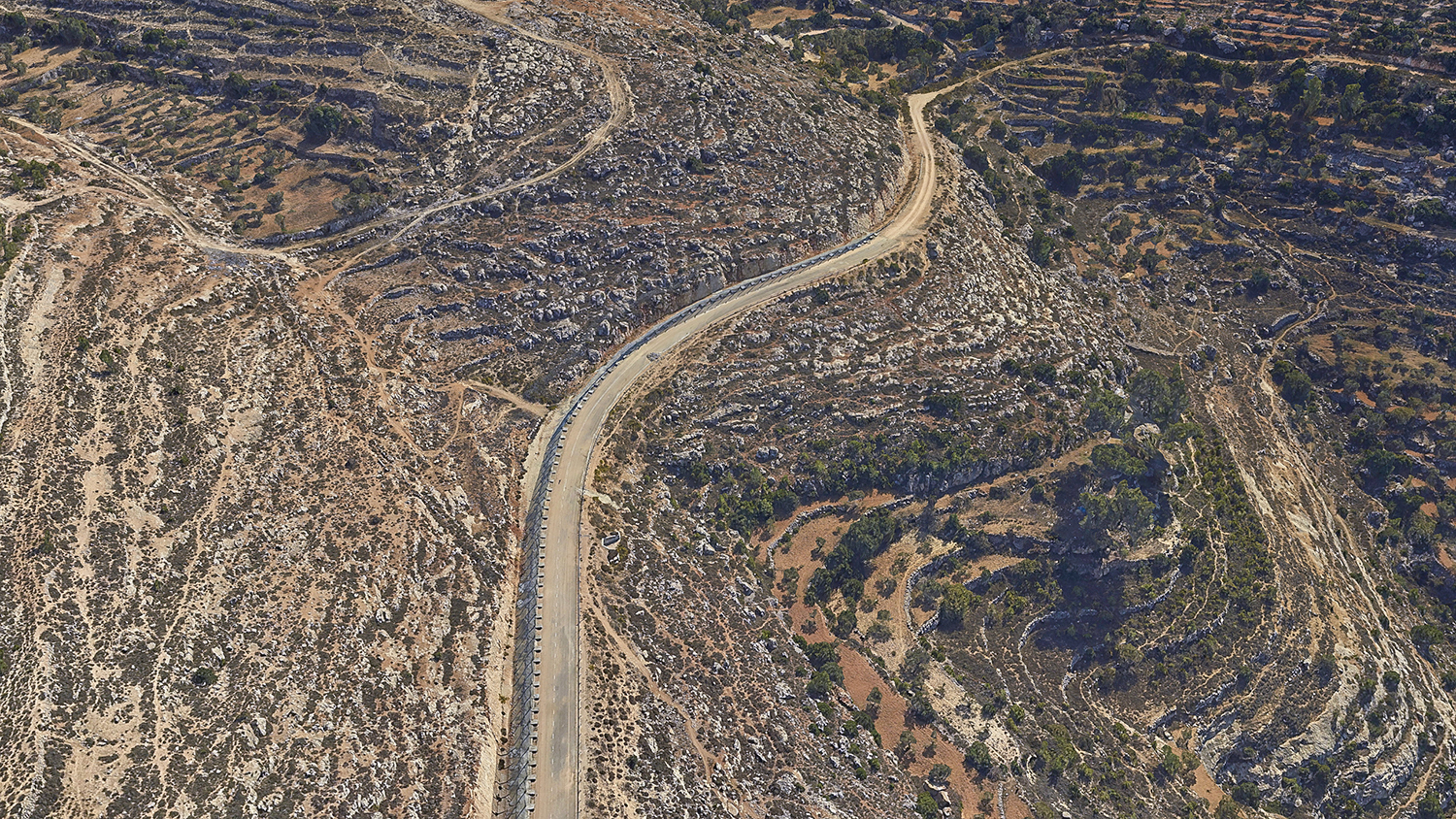
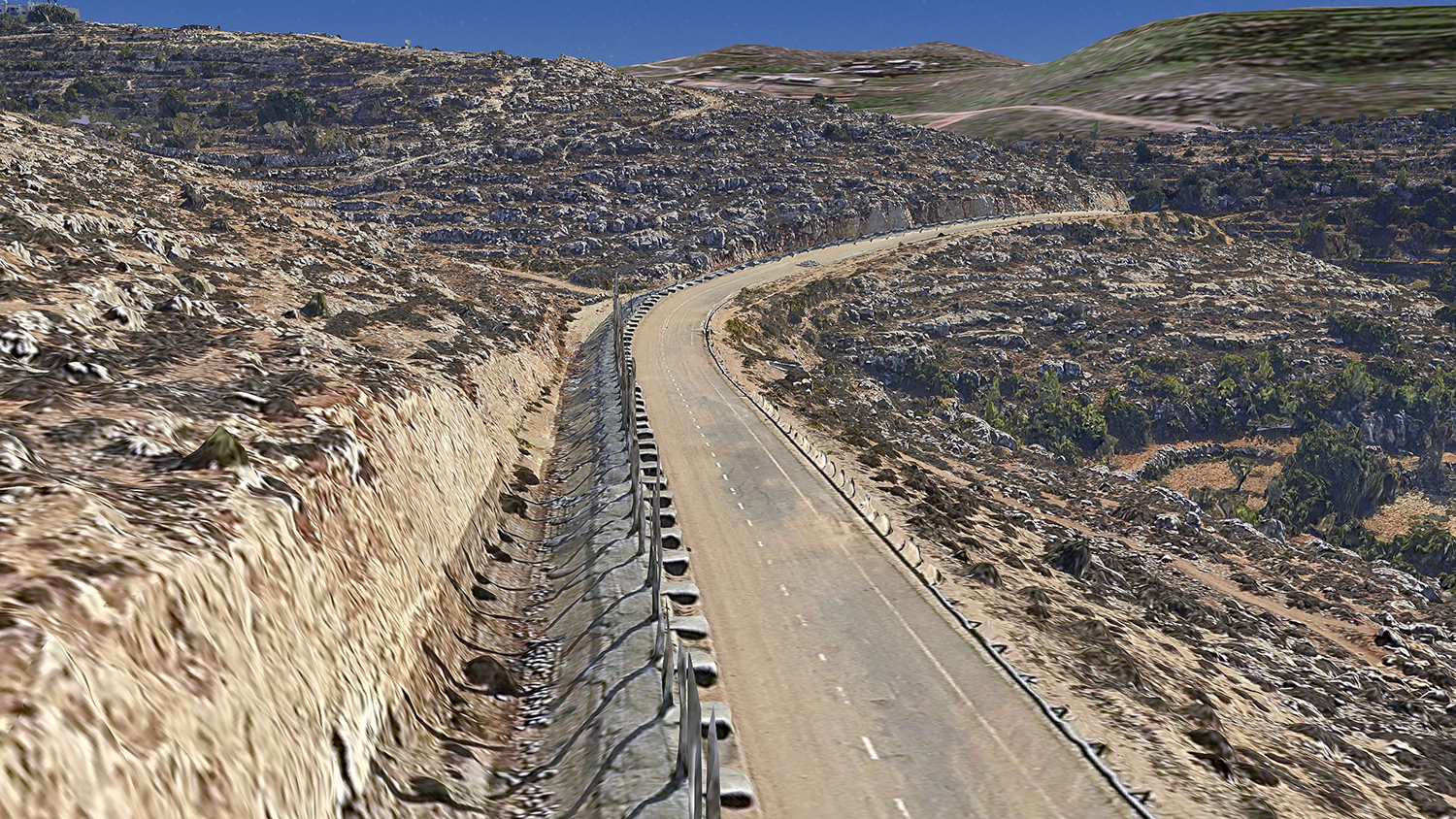
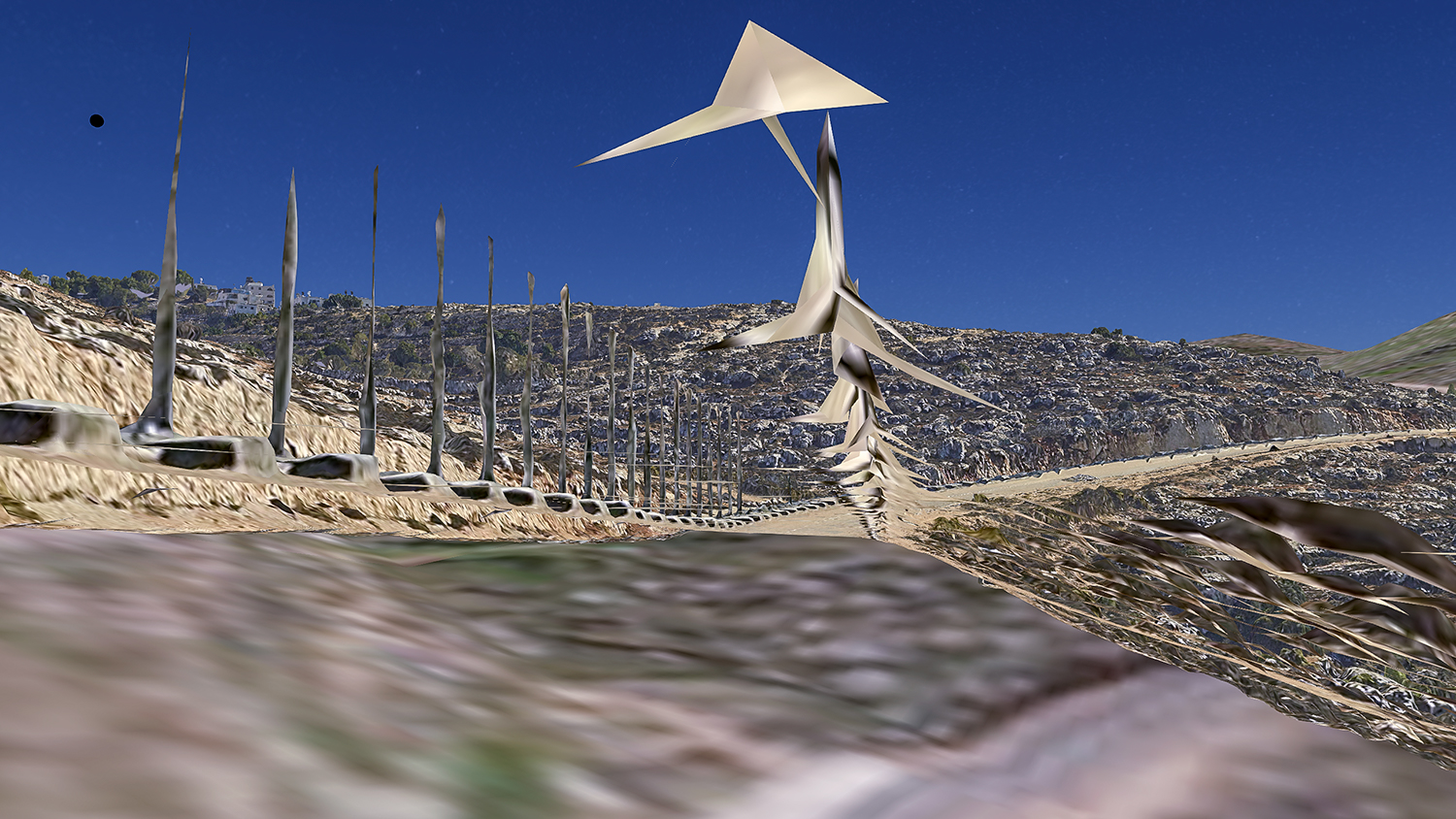

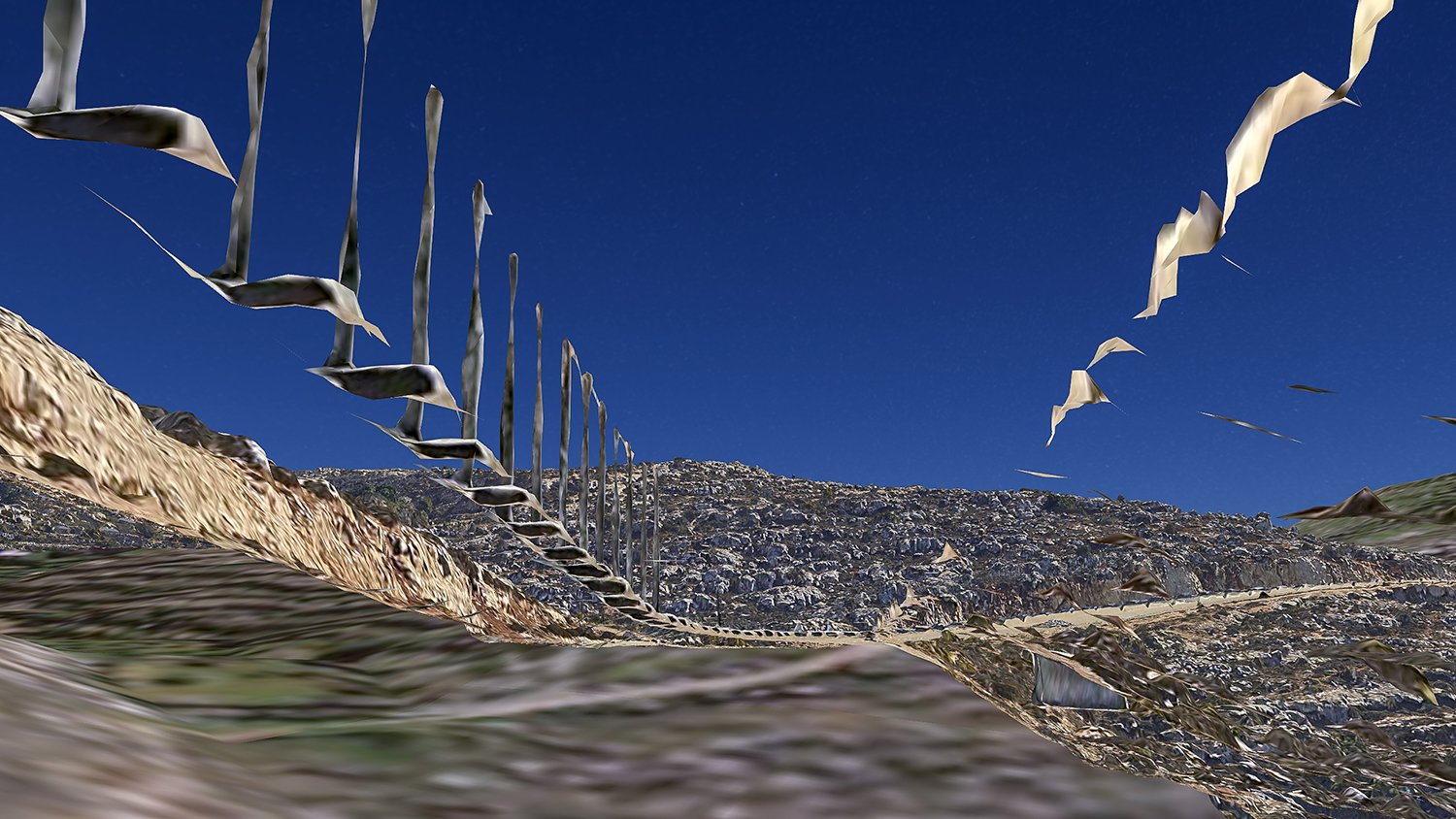
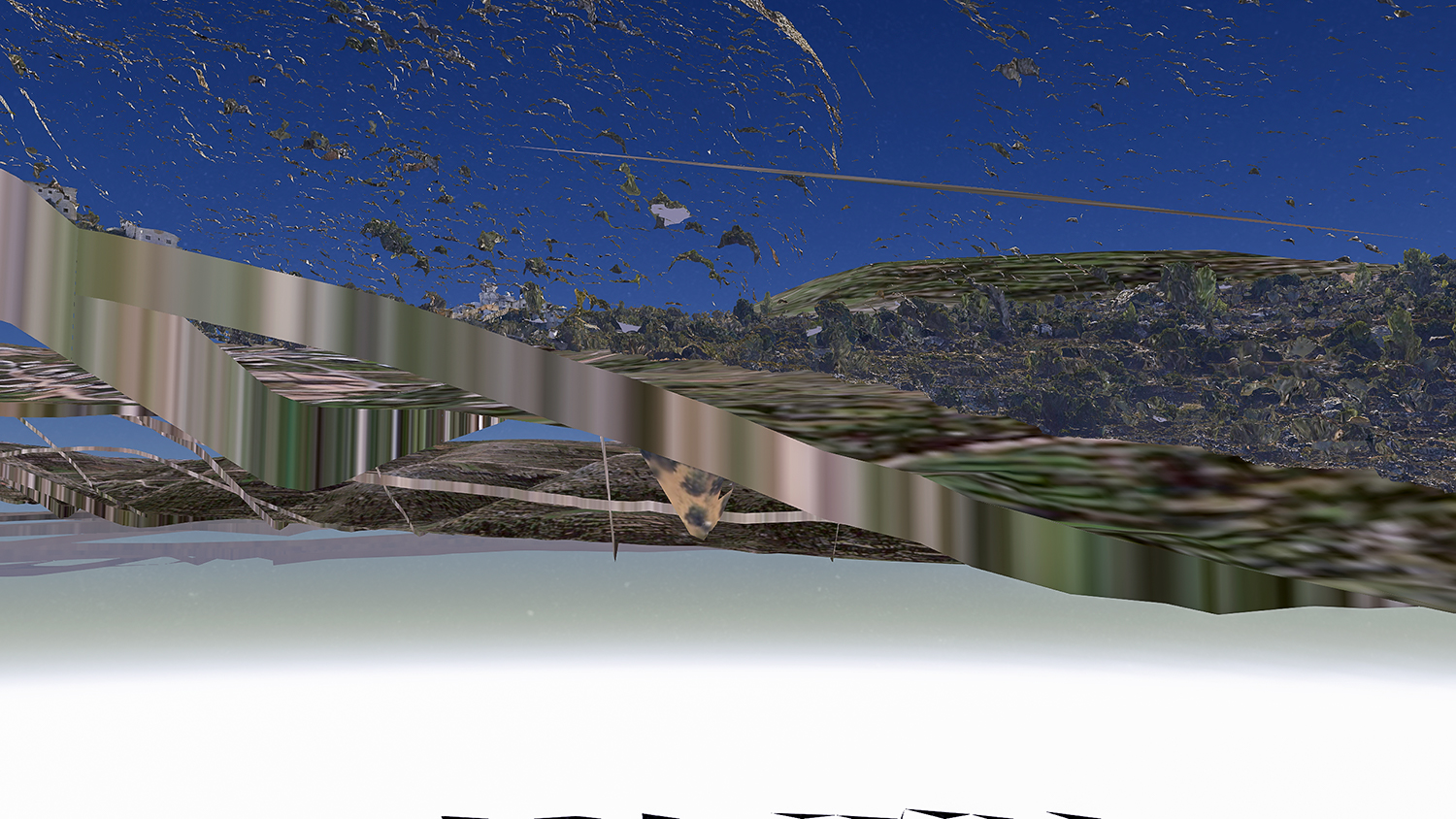
Aerial 3D GIS Views of Remaining Separation Barrier Construction in Walaja, Accessed through Jerusalem Municipality Mapping Portal
Limits of Municipal Map Rendering Software Used to Imagine Movement Rather than Segregation, 2018
Limits of Municipal Map Rendering Software Used to Imagine Movement Rather than Segregation, 2018
Ein Haniya is situated along this system of agricultural terraces. Cultural tourism plays a big part in the occupation, which entails policing and checkpoints, and fencing the area. It wants tourists to feel safe, and Israeli heritage protected. If the authorities can’t find any artifacts of Israeli heritage at Haniya, and if history does prove correct, they will argue the spring is part of the terrace system; thus by extension, that Haniya should be incorporated into Nahal Refaim national park. As before, an area once enjoyed by Palestinians and Israelis will become the sole property of the occupying force. An additional security checkpoint is already being devised while Ein Haniya is excavated. Al Walaja is already almost completely walled in by Settlements. We can bet the new checkpoint will be placed in the remaining gap. If this happens, Walaja, which sits atop Ein Haniya, will have become an enclave; a castle on the hill in reverse.
